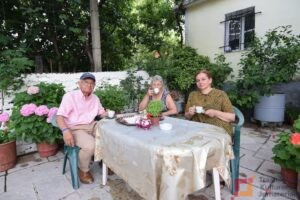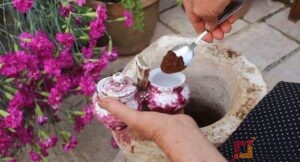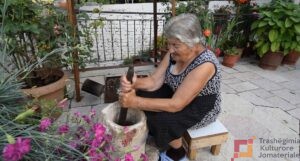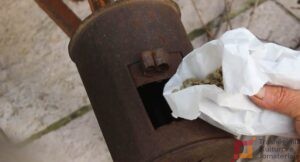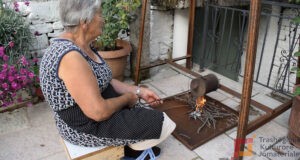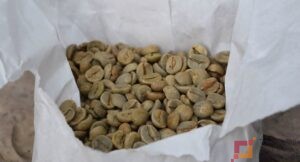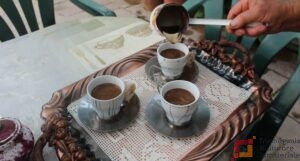Stone coffee pounder suggests that coffee beans are pounded inside a stone tool with a uniform top to bottom opening, specifically for that purpose.
Having stone coffee is practiced in Gjirokastra homes as a welcoming ritual after daily activities. Coffee made in such a way has a special taste and aroma, it becomes more creamy than ordinary black coffee (called Turkish coffee). This ritual is turning into an “institution”, especially in the afternoon leisure time conversations, more often among women about everyday life and the like.
Stone Coffee making goes through three steps:
Coffee qebap/Roasting
Coffee roasting was made in a qebap (coffee box), a work tool specifically produced for that purpose, which is a cylinder-shaped box with sliding closure, filled with coffee beans and gradually rotated on fire, until the required roasting was achieved.
Coffee stone/mortar – Grinding/Pounding
Once the coffee beans come out from the qebap, they are left to “sweat” in order to leak the fat, a process that facilitates the pounding. Next, the roasted coffee beans are poured into the stone mortar. The process goes on by pounding with an iron handle. The process requires working with too much force as it takes 600-800 pounds to obtain finely ground rather than too coarse coffee powder. Further, this process requires special care as pounding must be carried out precisely on the center of the stone tool to prevent it from chipping or breaking.
Once coffee beans have been pounded, the coffee powder as it is is removed from the stone tool and is brewed in a coffee pot as a regular black coffee paired with Turkish delights, cookies, and so on.


